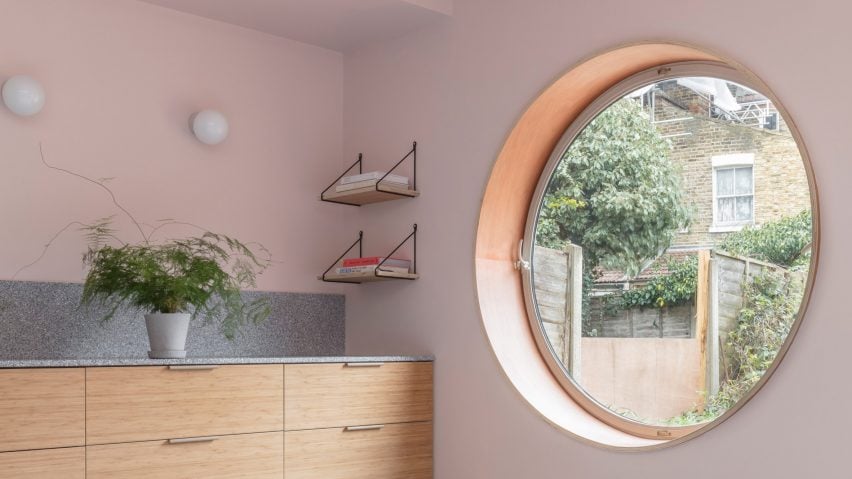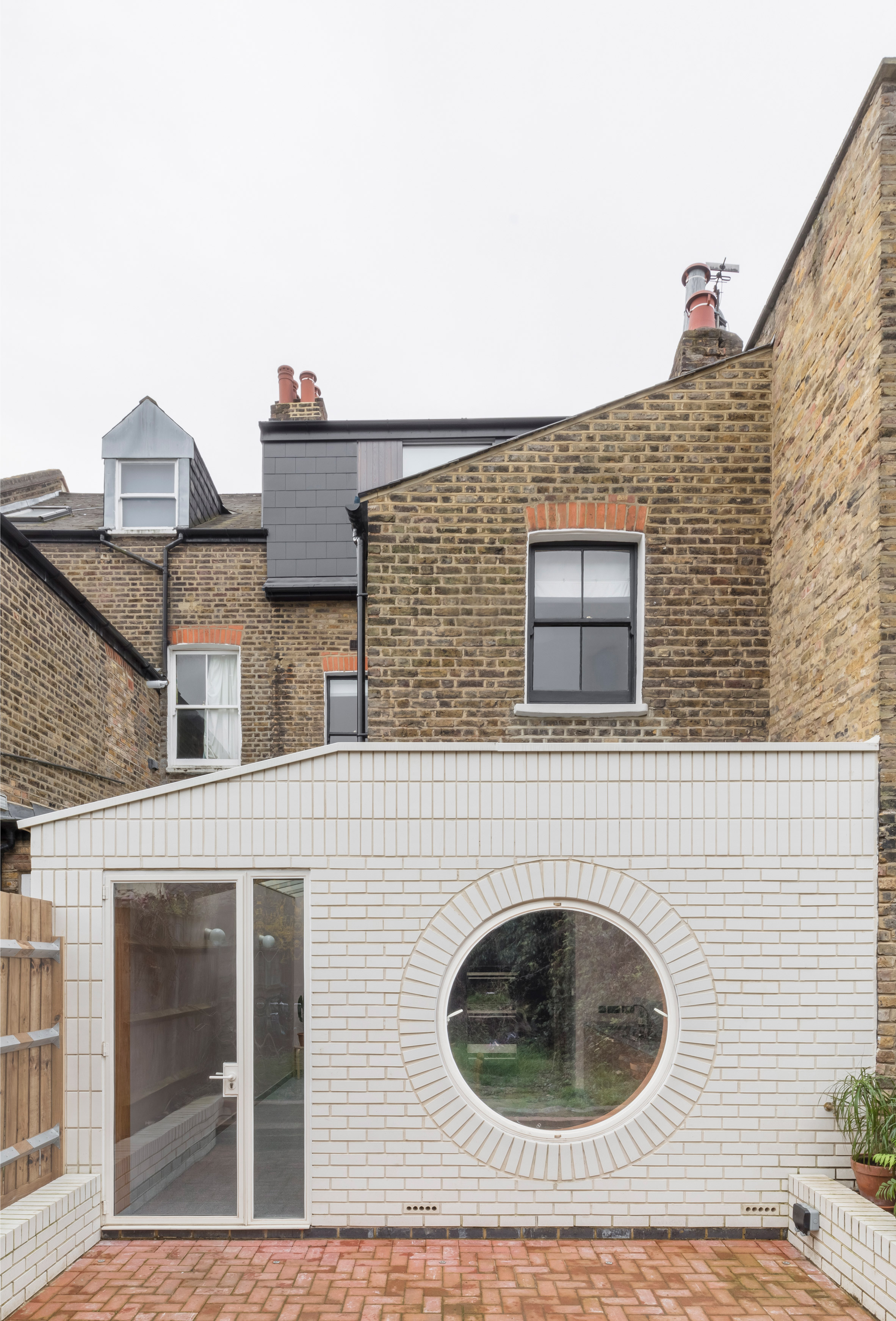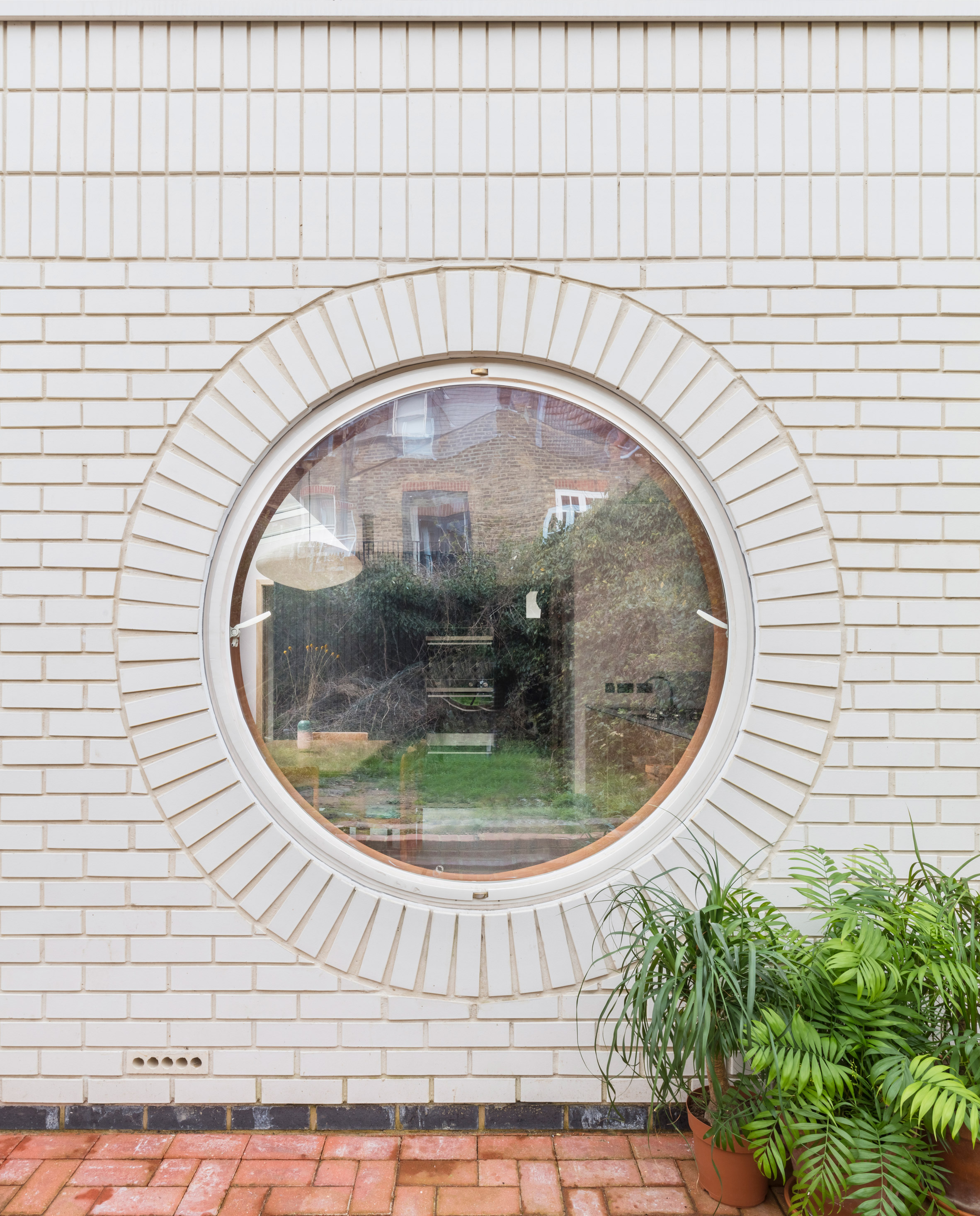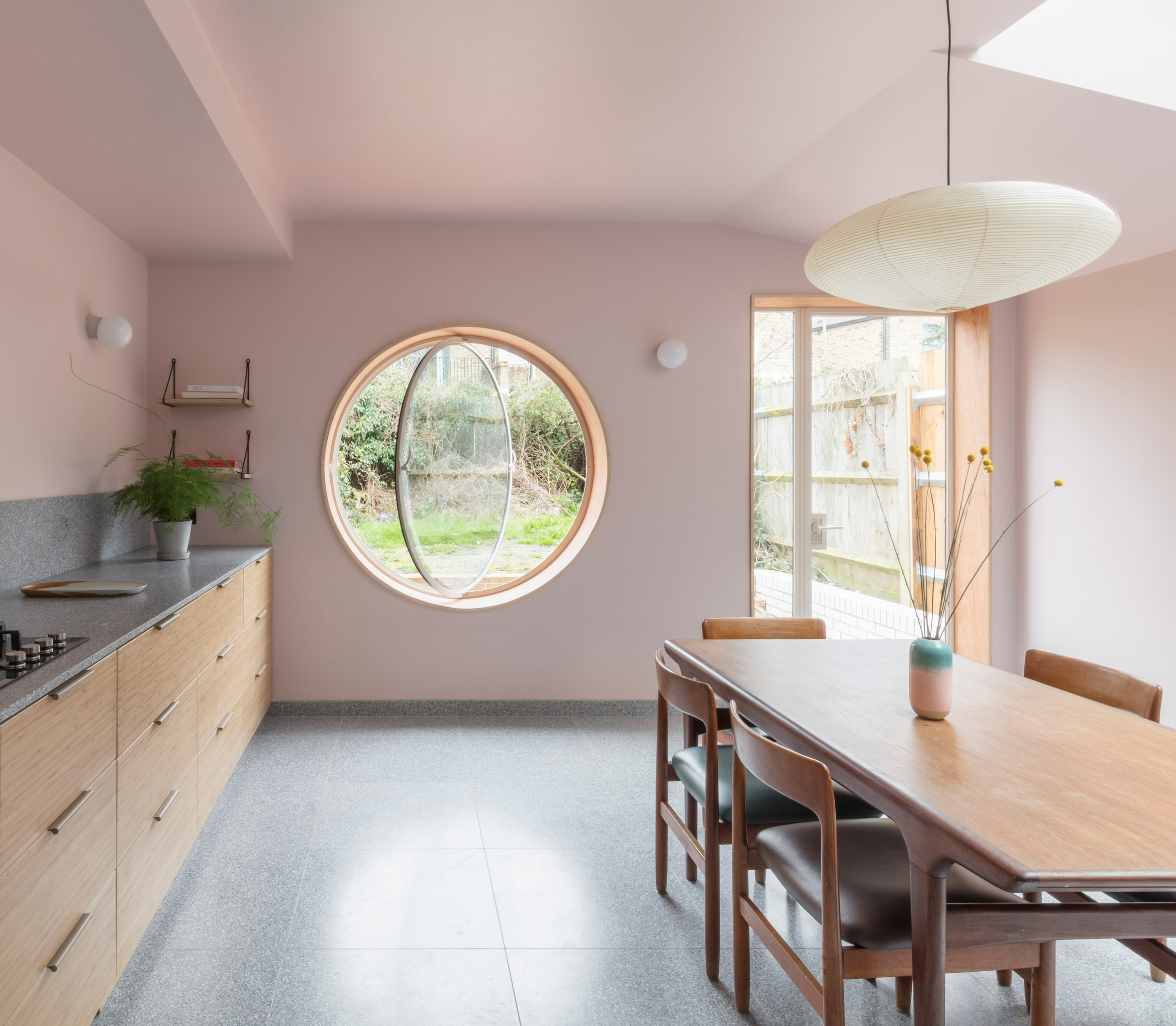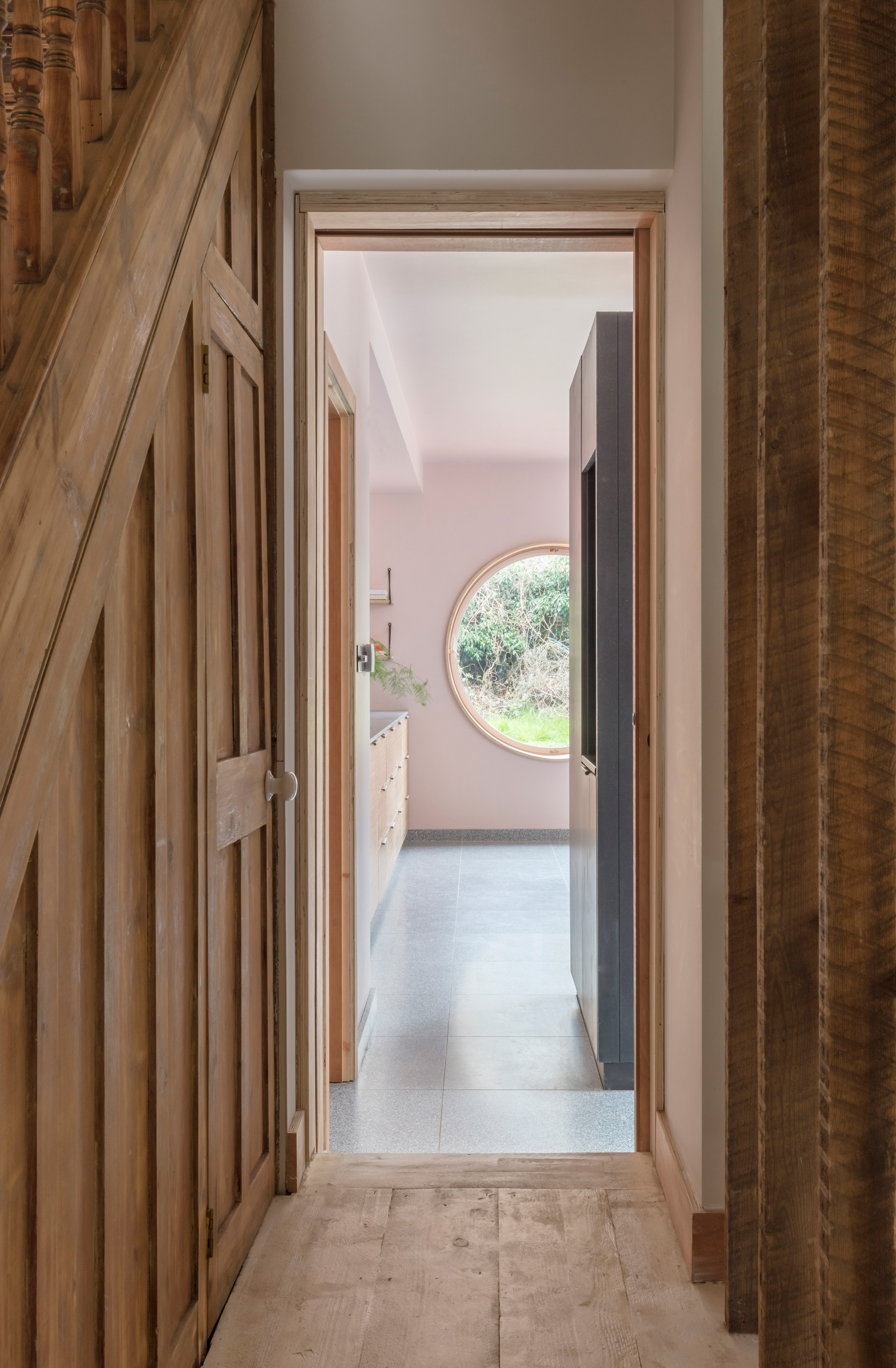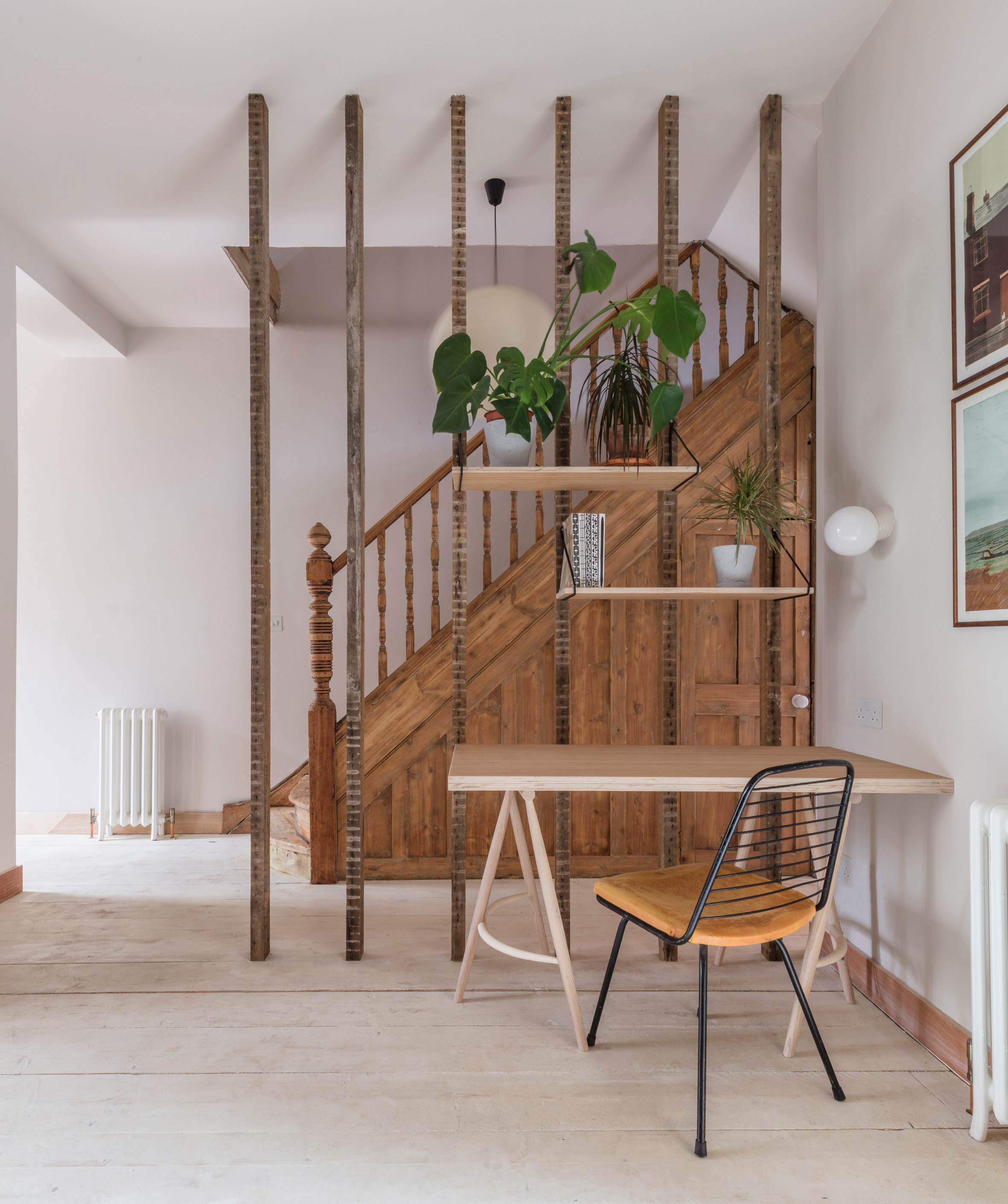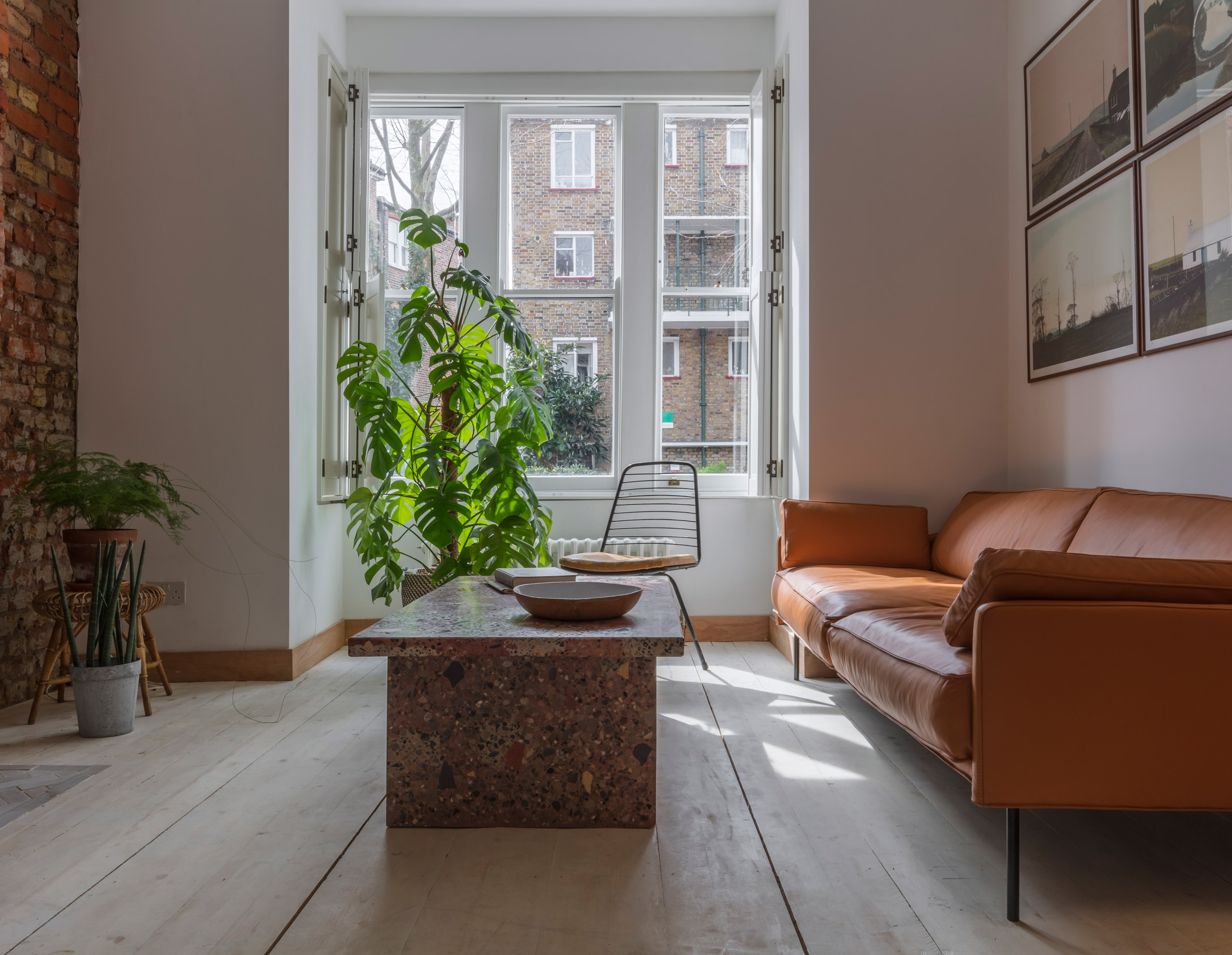Where can you find affordable 3D renderings? .Search Magpies Design 3D. www.magpiesdesign3d.com
December 12, 2018
Simon Astridge adds a white brick extension to the restored Victorian house
A large window in the shape of a porthole punctures the white brick façade of this extension of a townhouse in north London, designed by Simon Astridge.
Astridge, based in London, was commissioned to renovate and expand the property near Highbury Fields, to create a sequence of more contemporary spaces for a scientist and his family.
He set out to remodel the townhouse by gutting its interior to reveal some of the details and original finishes.
"The house was returned to its original state to unravel its original features and analyze the structure of the building," Astridge explained.
"The most modest building materials are intertwined with the existing fabric, joining the original features with simple interventions."
The new extension on the back of the property contains a kitchen. The volume of a single floor is externally clad in a white brick that contrasts with the original brick of the facade of London.
The ceiling light, the glass door and the circular window allow daylight to enter the space while addressing the problem of the view of neighboring buildings.
The window frames a view towards the blackberry bushes at the end of the garden and rotates on its vertical axis to create a window seat connected to the interior and exterior spaces.
The architects chose to retain the elements, such as the Victorian staircases, the brickwork and the wooden beams, which remain in their exposed state.
This decision helped reduce costs, in addition to creating a connection to the building's past and providing textural interest in several of the rooms.
The corridor at the entrance of the house opens into a living space with high ceilings that is flooded with light now that a partition separating it from a previous corridor has been removed to reveal the naked poles.
A restored staircase that leads from this space to another two floors is finished off with a new skylight that allows natural light to illuminate the upper part of the staircase.
One of the walls that line the staircase shows the original brick of the house, which also becomes a feature of the living room on the ground floor and on the final wall of the master bedroom.
Naturally aged surfaces are juxtaposed with contemporary materials such as terrazzo, black engineered woodwork, walls painted in pastel colors and red plywood doors.
A gray terrazzo is applied to all surfaces of floors, skirts and countertops in the kitchen, while a table in the living room is made of slabs of material with a reddish hue.
The material that gives the project its title, Terrazzo House, was chosen because "it reminded the owner to look through the microscope".
The photograph is by Nicholas Worley.
